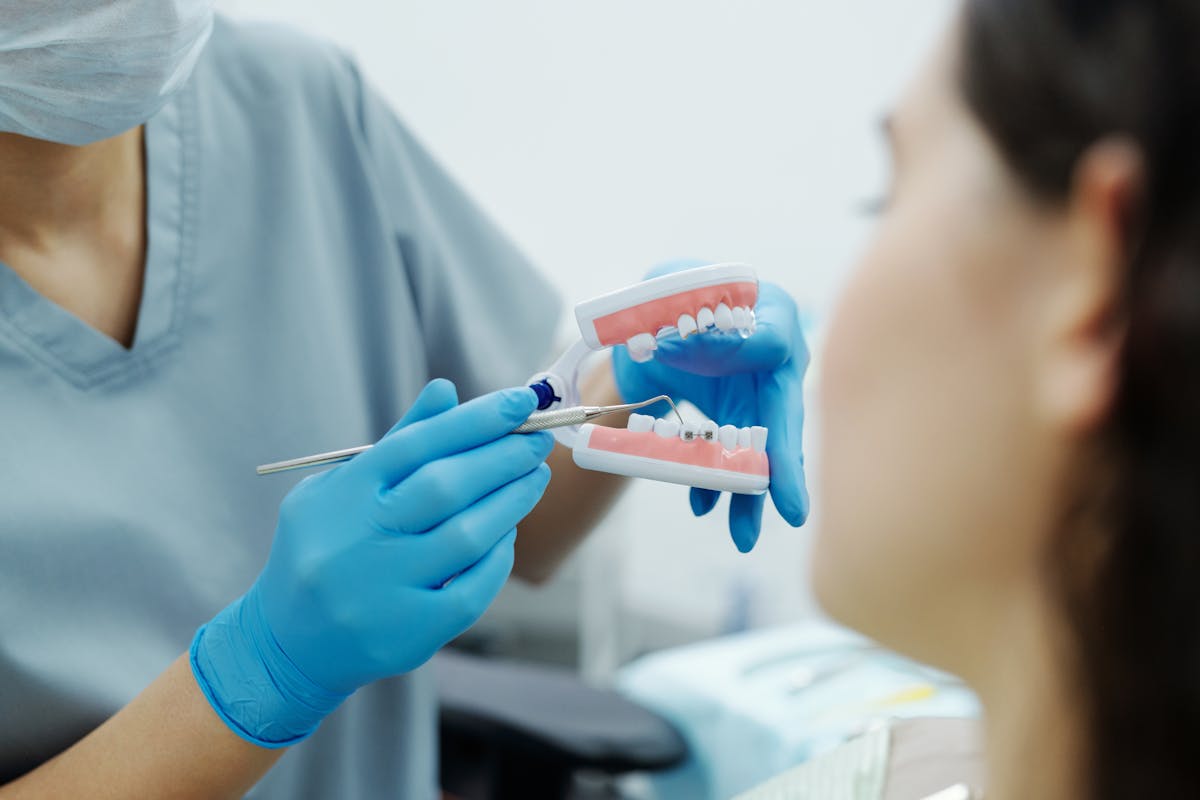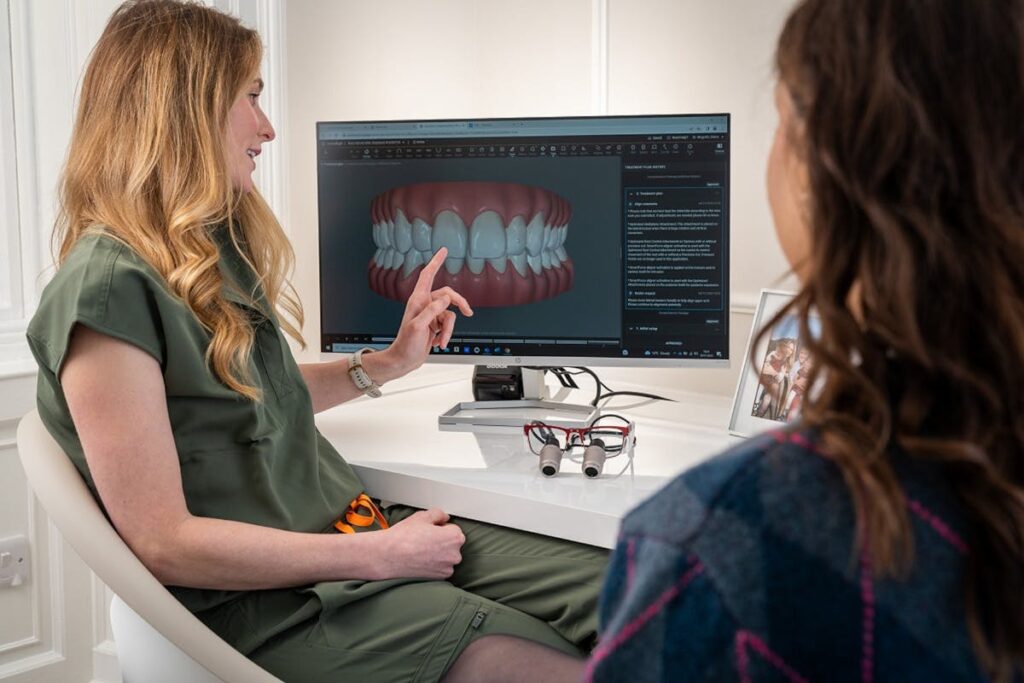Dental implants represent a significant advancement in modern dentistry, offering patients a permanent solution for missing teeth. The titanium posts surgically placed in the jawbone serve as artificial tooth roots, providing stability and preventing bone deterioration. This innovative treatment not only restores natural appearance and function but also addresses the psychological impact of tooth loss. Understanding the detailed benefits and procedural intricacies allows patients to make informed decisions about their oral health restoration journey.
Understanding Dental Implant Basics
Dental implants serve as artificial tooth roots that provide a permanent foundation for fixed replacement teeth. These biocompatible devices are typically composed of titanium or titanium alloys, materials chosen for their durability and ability to osseointegrate with natural bone tissue. The implant’s surface features microscopic texturing that enhances bone attachment and long-term stability.
Modern implant placement techniques involve precise surgical protocols executed in stages. Initially, the implant post is inserted into the jawbone through a carefully planned incision. Advanced imaging technologies guide placement accuracy, ensuring ideal positioning relative to adjacent teeth and critical structures. Following successful osseointegration, which typically requires 3-6 months, the prosthetic component is attached. This methodical approach, combined with proper implant material composition, delivers predictable outcomes in tooth replacement therapy.
Benefits of Choosing Dental Implants
Building upon the established foundation of implant mechanics, patients who opt for dental implants experience numerous evidence-based advantages over alternative tooth replacement methods. The integration of titanium posts into the jawbone promotes improved oral health by preventing bone loss and maintaining proper bite alignment. Dental implants effectively restore natural chewing function while preserving adjacent teeth.
These permanent restorations contribute to enhanced facial structure by preventing the sunken appearance often associated with missing teeth. Unlike removable dentures, implants eliminate speech impediments and food restrictions. The biocompatible materials used in modern implants demonstrate exceptional durability, with success rates exceeding 95% over ten years. Additionally, implants eliminate the need for adhesives, special cleaning solutions, and frequent adjustments typically required with conventional prosthetics, resulting in reduced long-term maintenance costs.
The Dental Implant Procedure Step by Step
The thorough dental implant procedure typically unfolds across multiple stages over several months, ensuring suitable integration and long-term success. The step by step process begins with exhaustive oral examination and imaging to assess bone density and determine implant placement.
The surgical technique involves creating an incision in the gum tissue to expose the jawbone, followed by precise drilling to create space for the titanium implant. After placement, the site requires 3-6 months for osseointegration, where bone fuses with the implant. Once healing is complete, an abutment is attached to connect the implant to the final restoration.
The final stage involves taking impressions and crafting a custom crown that matches adjacent teeth in color and shape, which is then permanently secured to the abutment.
Recovery and Healing After Implant Surgery
Following dental implant surgery, patients receive specific post-operative instructions to optimize healing and prevent complications. The recovery process typically spans several months as the implant undergoes osseointegration with the surrounding bone tissue. Patients must adhere to a prescribed timeline that includes initial soft tissue healing within the first 1-2 weeks, followed by progressive bone integration over 3-6 months, with regular monitoring by their dental professional.
Post-Surgery Care Instructions
Proper post-operative care plays a crucial role in ensuring successful dental implant integration and preventing complications. Patients must follow specific nutrition requirements, initially consuming soft, lukewarm foods while avoiding hard, crunchy, or spicy items that could irritate the surgical site. Managing swelling requires the application of ice packs intermittently for the first 48 hours.
Essential post-surgery protocols include gentle salt water rinses starting 24 hours after surgery, maintaining diligent oral hygiene while avoiding direct brushing of the implant site, and taking prescribed antibiotics and pain medication as directed. Patients should avoid smoking, limit physical activity for 48-72 hours, and keep the head elevated while sleeping. Regular follow-up appointments allow the dentist to monitor healing progress and address any concerns promptly.
Healing Timeline Expectations
While individual healing patterns may vary, dental implant recovery typically progresses through several distinct phases over a 3-6 month period. Initial soft tissue healing occurs within the first 7-14 days, during which patients experience gradual reduction in swelling and discomfort. The typical implant recovery period then enters a vital osseointegration phase, where the titanium implant fuses with the surrounding bone tissue.
At 2-3 months post-surgery, the bone-to-implant interface strengthens considerably, though complete integration may require up to 6 months. A realistic healing timeline accounts for factors such as patient age, overall health status, and adherence to post-operative care protocols. Once osseointegration is confirmed through clinical and radiographic examination, the restoration phase begins with the placement of the final crown or prosthetic component.
Long-Term Care and Maintenance
Maintaining dental implants requires meticulous daily cleaning with specialized brushes, floss, and water flossers to prevent bacterial accumulation around the implant-crown interface. Patients must schedule professional dental check-ups every 4-6 months for thorough examination of implant stability, assessment of surrounding tissue health, and professional cleaning of hard-to-reach areas. These regular maintenance visits allow dental professionals to detect and address potential complications early, ensuring the longevity of the implant through radiographic evaluation and periodontal probing.
Daily Cleaning Best Practices
Successful long-term outcomes of dental implants depend heavily on meticulous daily cleaning practices and oral hygiene routines. Patients must employ specific brushing techniques, using soft-bristled toothbrushes at a 45-degree angle to clean both the implant crown and surrounding gum tissue. Circular motions and gentle pressure help prevent damage to the implant components while effectively removing plaque and debris.
Specialized flossing methods are essential for implant maintenance. Patients should utilize unwaxed tape or implant-specific floss, carefully threading it around the prosthetic tooth. Water flossers provide an effective alternative, particularly for hard-to-reach areas. Antimicrobial mouth rinses can supplement mechanical cleaning efforts by reducing bacterial accumulation around the implant site. These daily practices, when performed consistently, help maintain implant integrity and prevent peri-implantitis.

Regular Dental Check-Up Schedule
Professional monitoring through scheduled dental check-ups forms the cornerstone of long-term dental implant maintenance. For individuals with dental implants in Washington, regular check-ups are essential to ensure lasting stability and oral health. Patients should maintain a consistent examination schedule, typically every three to six months, depending on their individual needs and oral health status.
During these visits, dental professionals perform exhaustive assessments of implant stability, surrounding tissue health, and bite alignment. The dental hygiene routine includes specialized cleaning techniques specifically designed for implant surfaces. X-rays are typically taken annually to evaluate bone levels and detect potential complications early.
The professional cleaning schedule may need adjustment based on factors such as smoking habits, systemic health conditions, or signs of periimplantitis. Dentists will evaluate plaque accumulation, gingival health, and mobility to guarantee the implant’s continued success and longevity. Early intervention remains pivotal for addressing any emerging concerns.
Cost Considerations and Insurance Coverage
The total cost of dental implant procedures can range from $3,000 to $6,000 per single tooth replacement, with extensive full-mouth reconstructions potentially exceeding $50,000. Insurance coverage for dental implants varies dramatically among providers, with many plans classifying implants as cosmetic procedures, resulting in limited or no coverage.
Patients should thoroughly review their insurance plan details to understand coverage limitations, deductibles, and annual maximums. Various financing options are available to help manage out-of-pocket expenses, including healthcare credit cards, payment plans, and third-party financing companies specializing in medical procedures. Some dental practices offer in-house financing or cash discounts. Additionally, dental schools and clinical research programs may provide implant procedures at reduced costs, though waiting times can be longer and treatment may be performed by supervised students.
Comparing Implants to Other Tooth Replacement Options
Modern dentistry offers several tooth replacement alternatives, each with distinct advantages and limitations compared to dental implants. Traditional bridges require modification of adjacent healthy teeth, while removable dentures may shift during use and contribute to bone loss. In contrast, dental implants provide superior tooth loss prevention by maintaining jawbone density and structural integrity.
Regarding implant longevity considerations, dental implants demonstrate exceptional durability, with success rates exceeding 95% over 20 years when properly maintained. Bridges typically last 7-10 years, while dentures require replacement every 5-7 years due to jaw changes and wear. Implants also preserve facial aesthetics by preventing the sunken appearance common with long-term denture use. Though initially more costly, implants’ durability and functionality often make them more cost-effective over time compared to repeated replacements of traditional alternatives.
Am I a Good Candidate for Dental Implants?
Determining implant candidacy requires a thorough evaluation of several key physiological and lifestyle factors. When evaluating implant eligibility, dental professionals scrutinize bone density, gum health, and overall oral structure integrity. Patients must have sufficient jawbone mass to support the implant posts and maintain healthy gum tissue free from periodontal disease.
When examining oral health suitability, practitioners review medical history, including conditions like diabetes or autoimmune disorders that may affect healing. Smoking habits, oral hygiene practices, and bite mechanics also influence candidacy. Patients should demonstrate commitment to maintaining good oral care routines and be willing to follow post-procedure protocols. Those with severe bone loss may require preliminary bone grafting procedures before implant placement. Regular dental visits and proper home care remain essential for long-term implant success.
Success Stories and Patient Experiences
Many patients who successfully qualify for dental implants go on to experience life-changing results, as documented through numerous clinical case studies and patient testimonials. Clinical records demonstrate significant improvements in both oral function and aesthetic outcomes, with success rates exceeding 95% in properly screened candidates.
Patient testimonials frequently highlight the restoration of everyday activities, including confident speaking, comfortable chewing, and unrestricted smiling. Real life transformations often extend beyond physical changes, with patients reporting enhanced social interactions and professional opportunities. Documentation shows particular success among those who previously struggled with conventional dentures or experienced tooth loss due to accidents. Follow-up studies indicate sustained patient satisfaction, with most reporting that their implants feel and function like natural teeth, leading to improved quality of life and psychological well-being.
Frequently Asked Questions
Will My Speech Be Affected Temporarily After Getting Dental Implants?
Temporary speech adjustments commonly occur during the implant healing process duration, typically lasting 1-2 weeks. Patients may experience minor pronunciation difficulties while adapting to the new dental prosthetics, but these effects resolve naturally.
Can I Get Dental Implants if I Have Diabetes?
Diabetic patients can receive dental implants with proper blood sugar control. Success depends on managing periodontal health and careful pre-surgical assessment. Dental professionals evaluate implant candidacy based on diabetes management and overall oral health status.
Is It Possible to Get Dental Implants Years After Tooth Loss?
Delayed implant placement remains viable years after tooth loss, provided adequate bone density exists. Partial tooth loss restoration can be achieved through bone grafting procedures if necessary to support successful implant integration.
Do Dental Implants Set off Metal Detectors at Airports?
Dental implants, typically made from titanium alloy, rarely trigger metal detectors during security screening. The implant metal composition is biocompatible and non-magnetic, making airport security passage generally unaffected by their presence.
Can I Switch From Dentures to Dental Implants at Any Age?
Switching from dentures to implants is possible at any age, provided patients meet implant eligibility criteria including adequate bone density and overall health. Cost considerations and medical evaluation are essential before proceeding with treatment.
